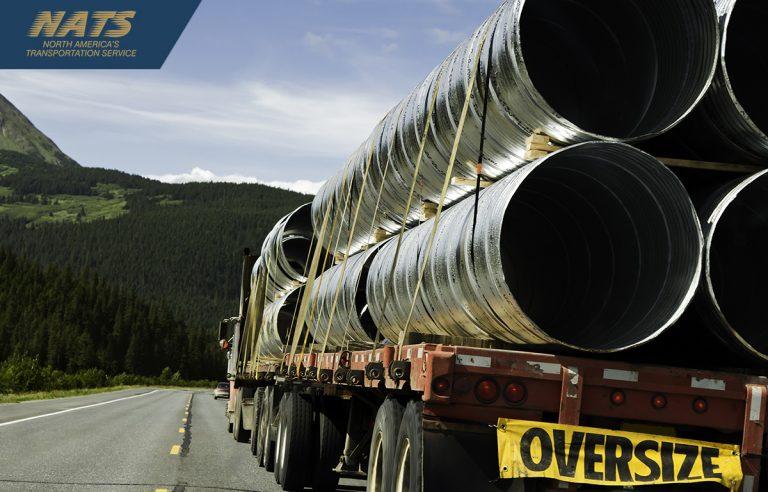Heavy Haul Freight Basics: A Guide to Trailer Axle Configurations

Transporting heavy equipment requires more than just powerful trucks; it demands expertise, precision, and specialized tools. For businesses in Canada and the U.S., navigating the complexities of heavy haul trucking can feel daunting. However, with the right knowledge about trailer axle configurations, you can simplify the process and ensure safe, efficient transportation. This guide explores the essentials of heavy haul trucking, focusing on how freight weight impacts trailer selection.
The Foundation of Heavy Haul Trucking
Heavy haul trucking companies play a pivotal role in moving oversized and heavy cargo across North America. This industry specializes in the safe and legal transportation of loads that exceed standard size or weight limits. From industrial equipment to oversized machinery, these shipments require detailed logistical planning, regulatory compliance, and the right equipment to get the job done.
At NATS Canada, we specialize in providing seamless heavy haul services, ensuring oversized cargo reaches its destination on time and without complications.
Weight and Trailer Configurations: Why It Matters
The weight of freight directly determines the type of trailer and axle configuration required. Incorrect configurations can lead to safety issues, regulatory fines, or even shipment delays. Understanding weight thresholds and corresponding trailer setups ensures the load is properly distributed, protecting the cargo and maintaining road safety.
General Rules to Keep in Mind
- Trailer Capacities Vary: Different manufacturers design trailers with varying capacities based on materials and construction. Weight thresholds are general guidelines but may vary slightly between models.
- State Regulations Apply: U.S. and Canadian states/provinces have unique weight limits and permit requirements. Heavy haul trucking companies must navigate these rules to remain compliant.
Trailer Configurations by Weight
Here’s a breakdown of how freight weight impacts axle configurations in heavy haul trucking:
● Up to 55,000 Pounds (5 Axles)
Standard trailers like flatbeds, step decks, and removable goosenecks (RGNs) handle freight up to this weight. These setups are ideal for common goods like building materials or consumer products.
● 55,001–84,000 Pounds (6–7 Axles)
Heavier loads in this range require additional axles for better weight distribution. Tri-axle flatbeds, step decks, or RGNs are commonly used, supported by quad-axle trucks.
● 84,001–107,000 Pounds (8–9 Axles)
To transport larger machinery or generators, trailers often include extra stinger or booster axles. These ensure the load stays balanced and safe during transit.
● 107,001–135,000 Pounds (10–12 Axles)
At this weight, shipments become highly complex. Modular configurations using jeeps (intermediary dollies) and boosters are key to transporting oversized cargo like cranes or industrial tanks.
● 135,001+ Pounds (13+ Axles)
Heavy haul carriers in Ontario and across North America use specialized dual-lane trailers or modular line trailers for these extreme loads. These setups can include up to 36 axles for maximum weight distribution.
Navigating Heavy Equipment Shipping in Canada
Shipping heavy equipment in Canada requires careful consideration of unique regional challenges, such as varying weather, terrain, and permit requirements. Reliable heavy haul trucking companies like NATS Canada simplify this process by leveraging their experience and extensive network.
What Sets NATS Canada Apart?
- Comprehensive Services: From LTL and FTL trucking to heavy haul and flatbed transport, we cater to diverse needs.
- Regulatory Expertise: We handle permits and compliance, ensuring smooth cross-border shipments between Canada and the U.S.
- Reliability: With a reputation as one of the most dependable heavy haul carriers in Ontario, we prioritize safety and customer satisfaction.
Partnering for Success in Heavy Haul Trucking
Choosing the right transportation partner is crucial for businesses with oversized cargo. Experienced oversize load trucking companies provide more than just vehicles—they offer peace of mind. From regulatory compliance to logistical planning, these companies streamline the complexities of heavy equipment shipping in Canada.
At NATS Canada, we’ve built a legacy of excellence in the transportation industry. Whether you’re moving freight locally or internationally, our expertise ensures your shipment arrives safely, efficiently, and on budget. Partner with us to experience stress-free logistics tailored to your needs.
When it comes to heavy haul trucking, knowledge and preparation are your strongest allies. By understanding how weight impacts trailer configurations and partnering with the right carrier, your heavy freight can move seamlessly across borders, highways, and provinces.
Let NATS Canada guide you in navigating the intricacies of heavy haul transportation. Whether you need flatbed trucking or cross-border shipping, we’re here to help your business succeed!
